Developing a hydrant management program makes the difference between uncertainty and informed response when it comes to water supply. Whether you want to improve your prefire plans, troubleshoot the water supply in your district, or lower your ISO score, hydrant management makes sense.
By developing an effective and a sustainable program, you will keep your community safer and help lower insurance rates for your citizens. Plus, you will build a better relationship with your public works department as you understand and help maintain your city’s water supply. It also gives you and your personnel the opportunity to interact with the citizens in a nonemergency situation in a positive way. When conducting flow testing or painting of hydrants, what better way to engage the customers than by allowing a small child and parent to watch or participate? That small interaction may plant a seed for a future firefighter; at least it gives the parents bragging rights about “their fire department” on social media to their friends and family. This is a win-win situation, even if it costs an extra five minutes at a hydrant. Remember, we work for them.
If your department needs to develop a hydrant management program, here are some practical guidelines for how to start one from scratch.
Find Your Hydrants
The first step in your hydrant management program is locating all your water sources. Your community may already have a hydrant file listing the locations for all the fire hydrants in your district. Ask your water department or commissioner for this information, then make sure you go out in the field and check it for accuracy. If no hydrant file exists, it’s very easy to start your own.
The next step is to get out in your community and drive up and down the streets looking for hydrants. Again, if the opportunity presents itself, stop and engage with your community. Explain to the citizens what you are doing and why. Educate your customers, garner their support, and explain the technology that you are using and the importance of using it.
RELATED FIREFIGHTER TRAINING
- SETTING AND CARE OF FIRE HYDRANTS
- Are You Using the Hydrant Kit to Maximum Advantage?
- Firefighting Basics: Getting Water to and on the Fire, Part 1
- HOW RELIABLE ARE PRIVATE FIRE HYDRANTS?
When you find a hydrant, use a GPS tagging device to pinpoint the hydrant latitude and longitude. We used an app for this, and we also added the hydrants into the app as we found each one. Now our app shows hydrant locations for every hydrant in our community, plus we added several in the surrounding county where we respond frequently.
An added bonus when our crews were driving to locate and pin hydrants was learning their first-due response areas—streets, various construction features, and other potential hazards or limitations. The learning potential is countless; make every day a training day. I have even used the app for classroom training in preplans and area familiarization.
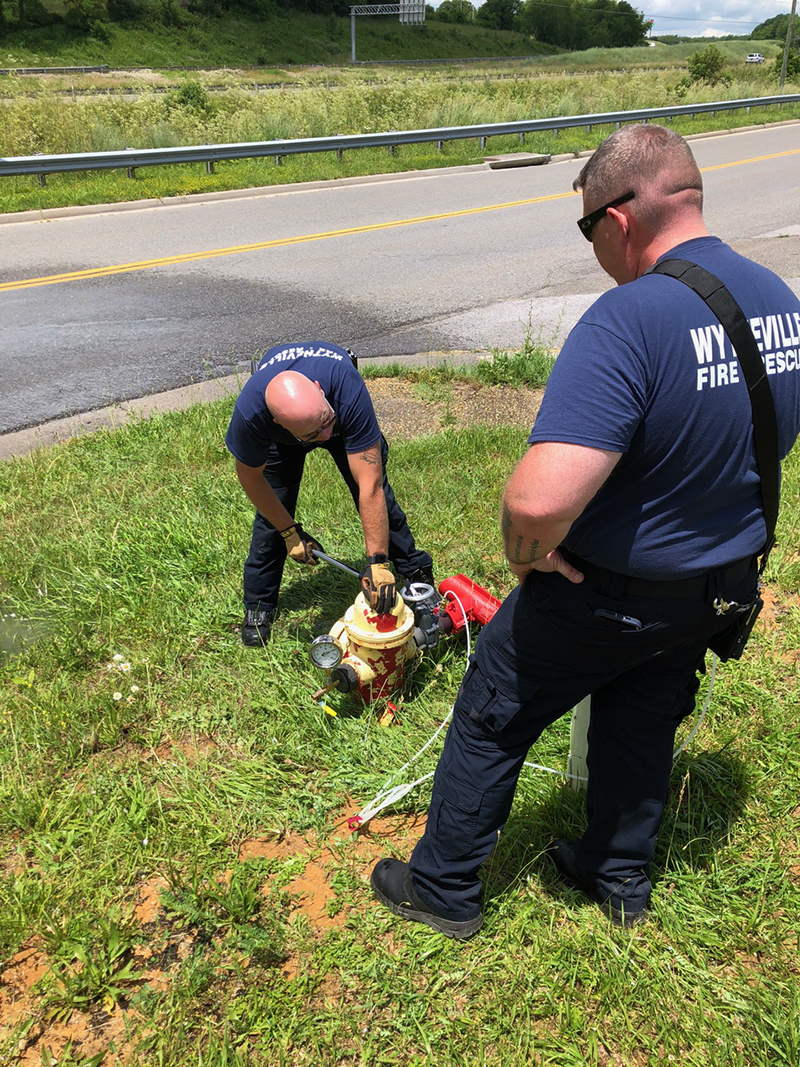
(1) Members of the Wytheville (VA) Fire Department use proper hydrant testing equipment to obtain accurate flow test results. (Photos by author.)
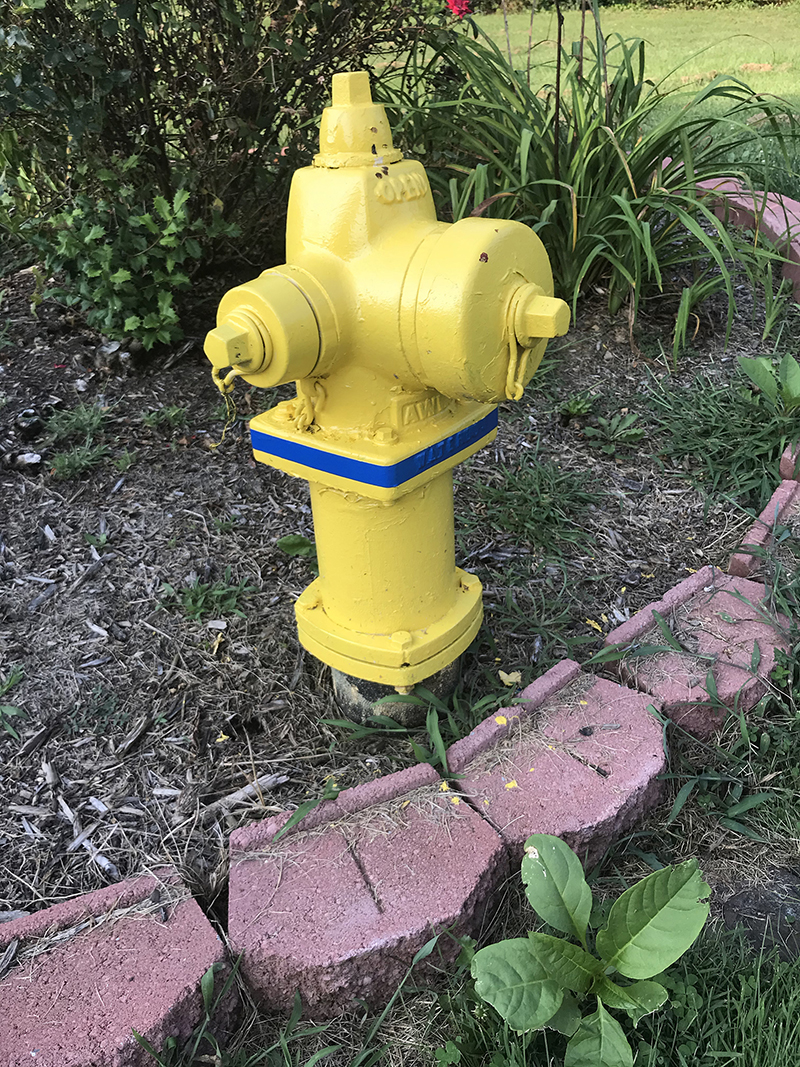
(2) Sometimes, the area around hydrants has flower beds or decorative planters. This residence, despite having placed pavers around the hydrant and not giving a 36-inch clearance, kept plants an adequate distance away so firefighters would have access.
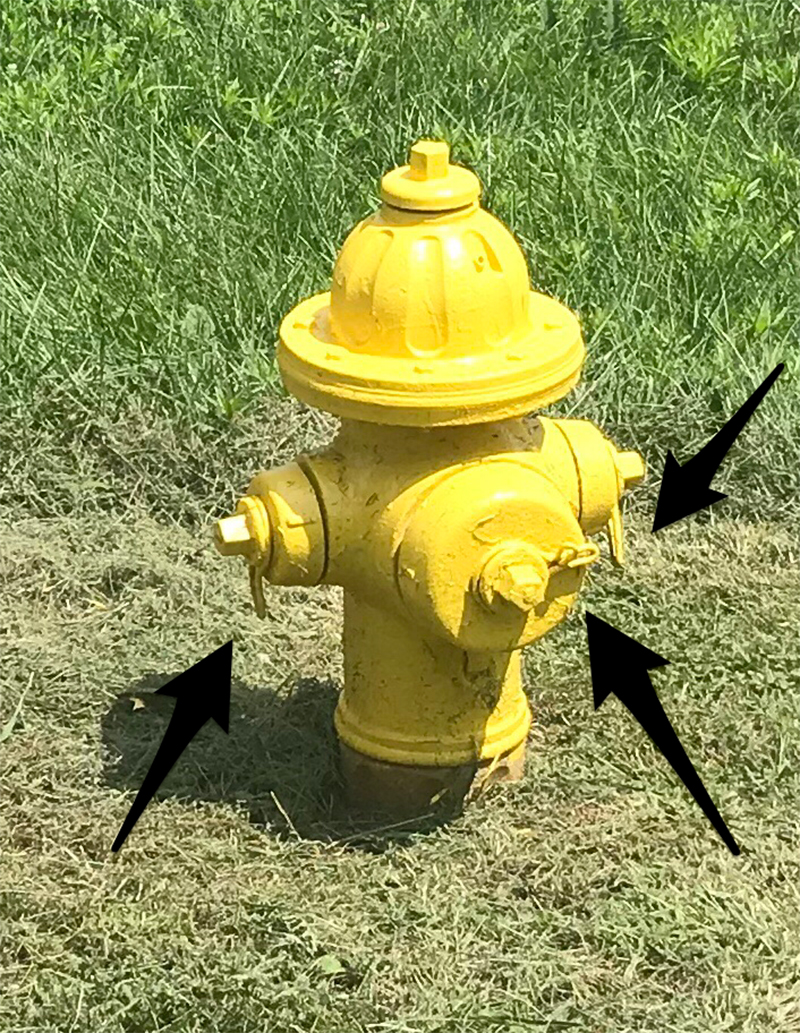
(3) When crews are cleaning and sanding hydrants, make sure to remove all chains (unless specified by department or water department guidelines). We chose to have all chains removed for ease of operations.
Start Flow Testing
Once you identify your hydrants, you can begin your flow testing. Our department followed National Fire Protection Association (NFPA) guidelines as we drafted a policy and guidelines for fixed water supplies and hydrant testing. Then, we created a spreadsheet where we could input the following information:
- Hydrant manufacturer.
- Hydrant size.
- Date hydrant was put in.
- Date flow tested.
- Shift.
- Hydrant location.
- Static flow.
- Residual flow.
- Flow rating.
- Required flow.
- Total gallons per minute (gpm).
We used a hydrant testing kit to easily calculate accurate required flow and gpm.
When we began conducting hydrant testing, we used the “one hydrant method” vs. two hydrants. Although the practice of testing two hydrants is recommended in NFPA 291, Recommended Practice for Fire Flow Testing and Marking of Hydrants, there is a newer practice of a one-hydrant test being considered to revise the current NFPA guideline.
We used a fire hydrant testing kit that included a 10- x 12-inch diffuser with a two-inch pilotless nozzle, a 0- to 100-psi four-inch gauge, a gated valve, a remote reader with extension tubing, and a short section of three-inch hose in a custom-padded case from the manufacturer.
The manufacturer has an online Hydrant Flow Test Calculator that measures the rated capacity at 20 psi of a fire hydrant. The rated capacity calculation is useful in determining the total water supply at a given point in the hydrant or water main. The calculation offers more useful information than the test flow by itself and is used by insurance underwriters.
NFPA 291 recommends the Fire Main Capacity Flow Test, which uses two or more fire hydrants to determine the value of water supplied by the underground water mains at the fire hydrant. The Hydrant Capacity Fire Flow Test more accurately predicts water available from a hydrant and is more economical and easier to perform with less staffing. This also ensures that every hydrant is being tested and is functioning properly, where the Main Capacity Flow Test does not.
Upload Your Hydrant File
Another critical step in developing a hydrant management program is packaging the information so your first-in responders can easily use it during an incident. Our department uses the app for this. The data we collected lives in our app, and we can quickly pull it up by tapping a dispatch notification.
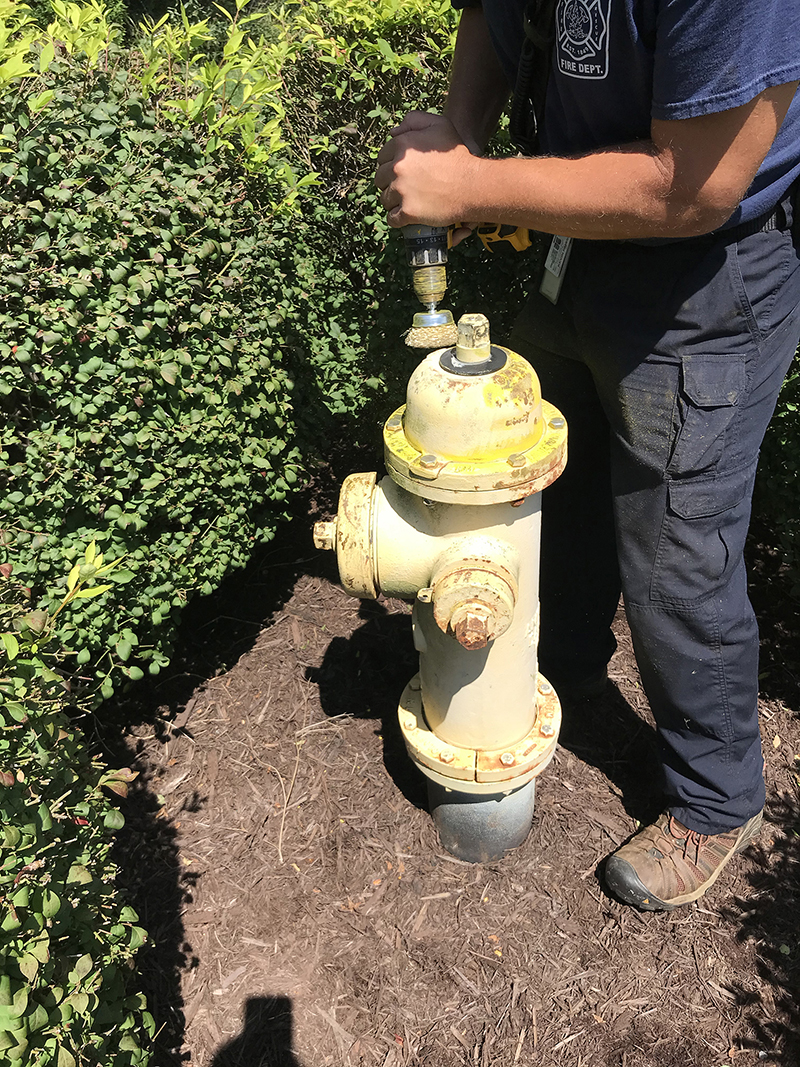
(4) A residence has let shrubs overgrow around the fire hydrant. As crews went to clean (with a cordless drill with a wire wheel), they approached the homeowner in a respectful manner and explained what they were doing. In this case, the homeowner agreed to correct the issue. In some cases, the homeowners aren’t so agreeable, and then administrations and code officers have to get involved.

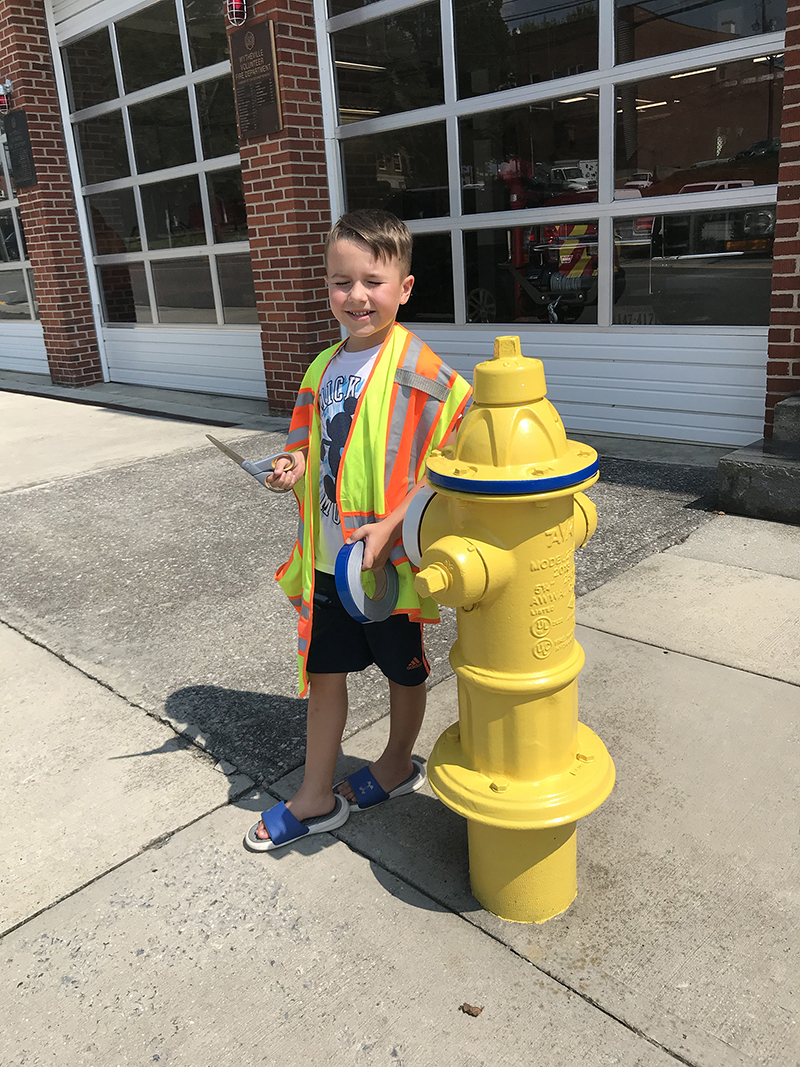
(5, 6) Allowing a small child and parent to watch or even participate may plant a seed for a future firefighter. That small interaction can make a difference.

(7) This hydrant with a white steamer cap indicates that an adapter will be needed. It’s a simple way for firefighters to identify it, especially in the middle of the night. The reflective tape around the bonnet signifies the tested flow rating and allows for easy identification at night too.
If you have an app, once you finish flow testing and recording the hydrant data, upload your hydrant file into your app. This populates the app with all the information you just collected. Then, the required flow rate and gpm will show up when you tap a dispatch notification, and the best hydrants for the incident location will be highlighted for you.
Clear, Paint, and Tape Your Hydrants
As you develop your hydrant management program, consider hydrant visibility and accessibility. If you notice hydrants in your district that are blocked or not easily visible, take steps to ensure first responders can easily see and access the water sources.
Clear. If a hydrant is blocked by bushes or other obstructions, draft a letter to the home or business owner kindly asking them to clear the area about 36 inches around the hydrant. Many people prefer to do it themselves rather than have someone cut their bushes. Plus, this will save your department some time and labor.
Paint. With your hydrants clear, you can move on to painting. Prepping the hydrants that hadn’t been painted in many years, we spent a lot of time cleaning the hydrants of old and flaked paint, rust, and grime. This was labor-intensive, but it also created friendly rivalry among shifts. It helped build a sense of pride and ownership in our hydrants, which led to other aspects of the job too—and our community saw it! There’s nothing better for a fire chief than driving through the community seeing brightly painted fire hydrants on nice green lawns followed by an engine crew stopped with a mother and kids—and the kids getting to put a few slaps of paint on a fire hydrant. It’s now THEIR fire hydrant.
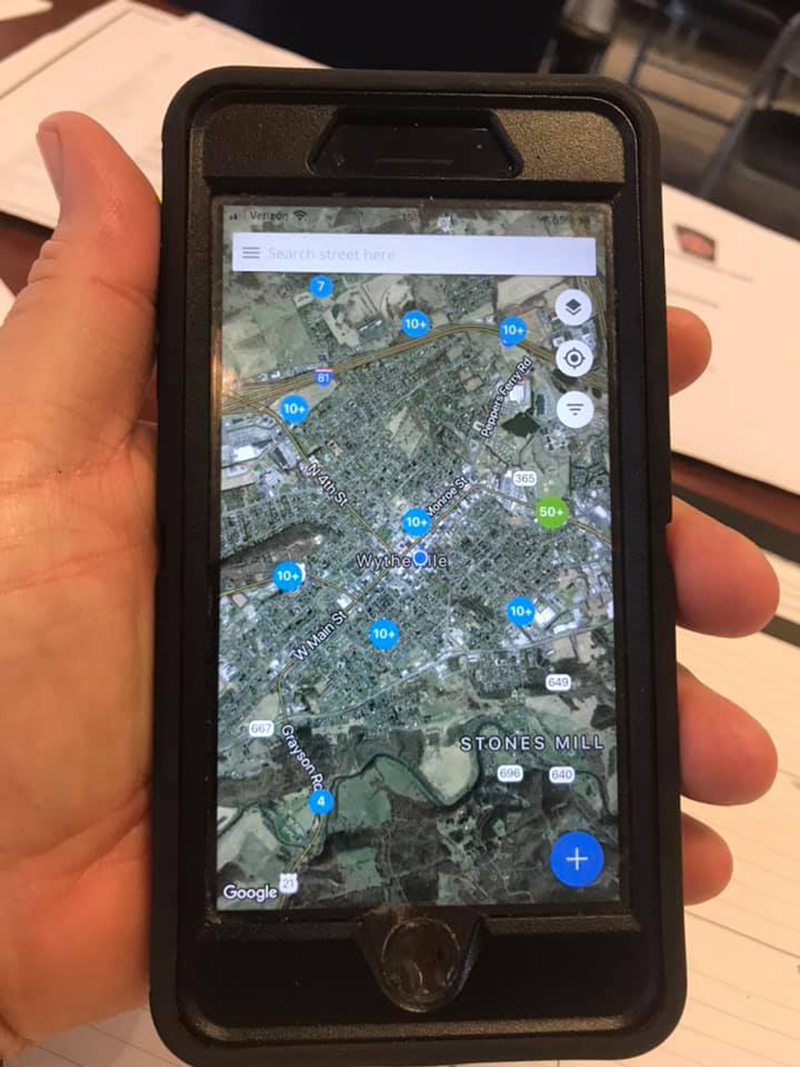
(8) Using a Cloud-based mobile app allowed our organization to enter hydrant data in real time. Here, we can see how many fire hydrants are in certain geographical locations.
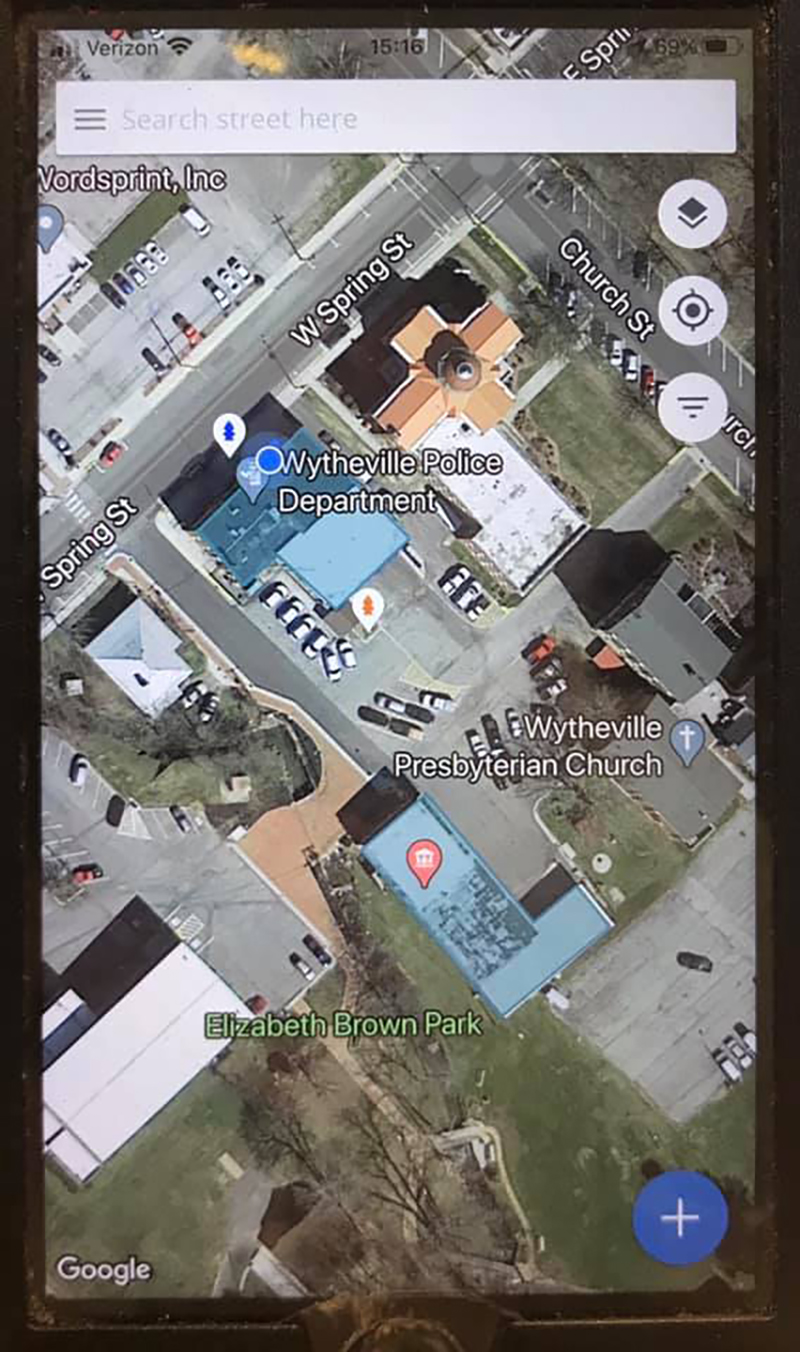
(9) The app we purchased also is used for preplans of structures in the community, which also allows for tagging hydrants close to the building. We can attach as many hydrants as we want to each preplan.

(10) Hydrant locations and flows are entered by personnel in real time, and the proper NFPA color coding is populated. This is invaluable to responding crews as well as when compiling data for your ISO review.
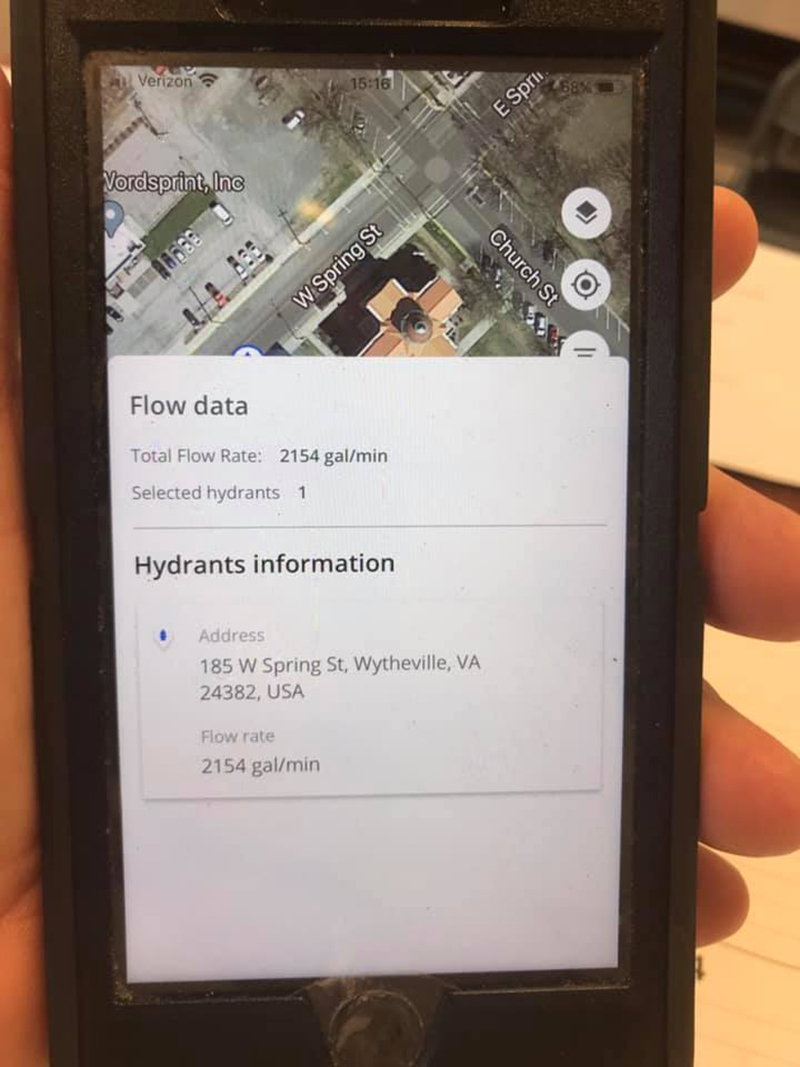
(11) Flow data populates when you click on a hydrant with not only the flow rating but also an address that is assigned to the hydrant or the nearest structural address.
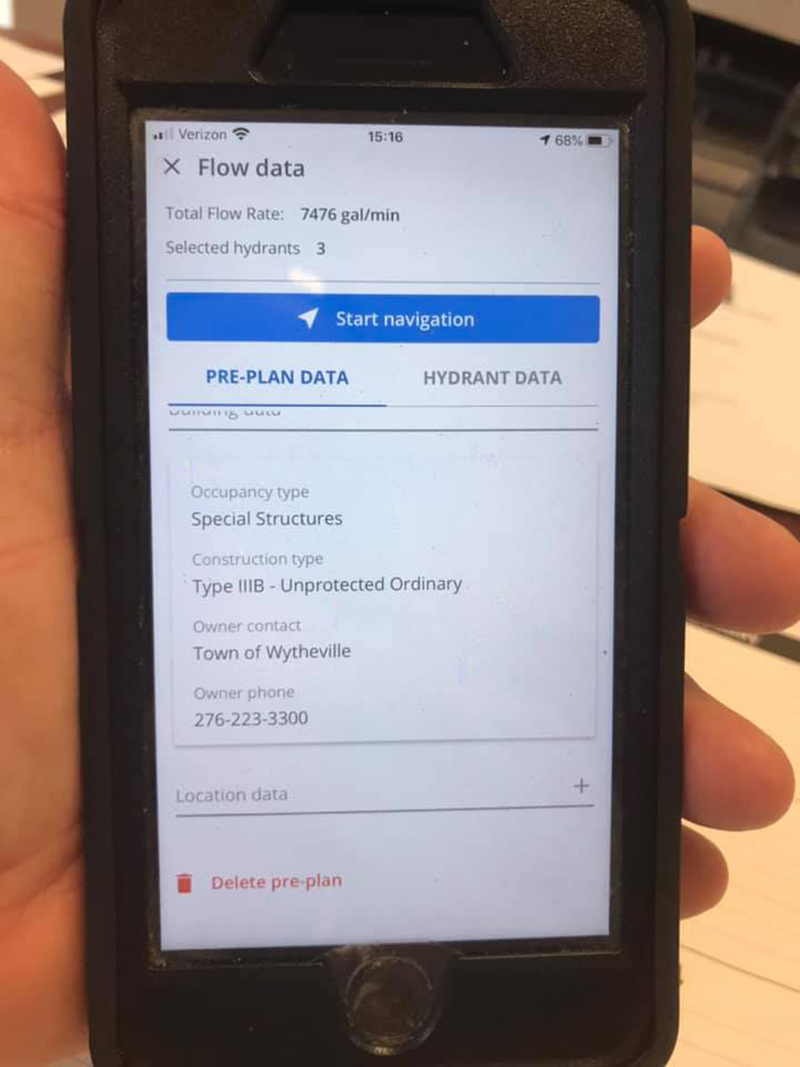
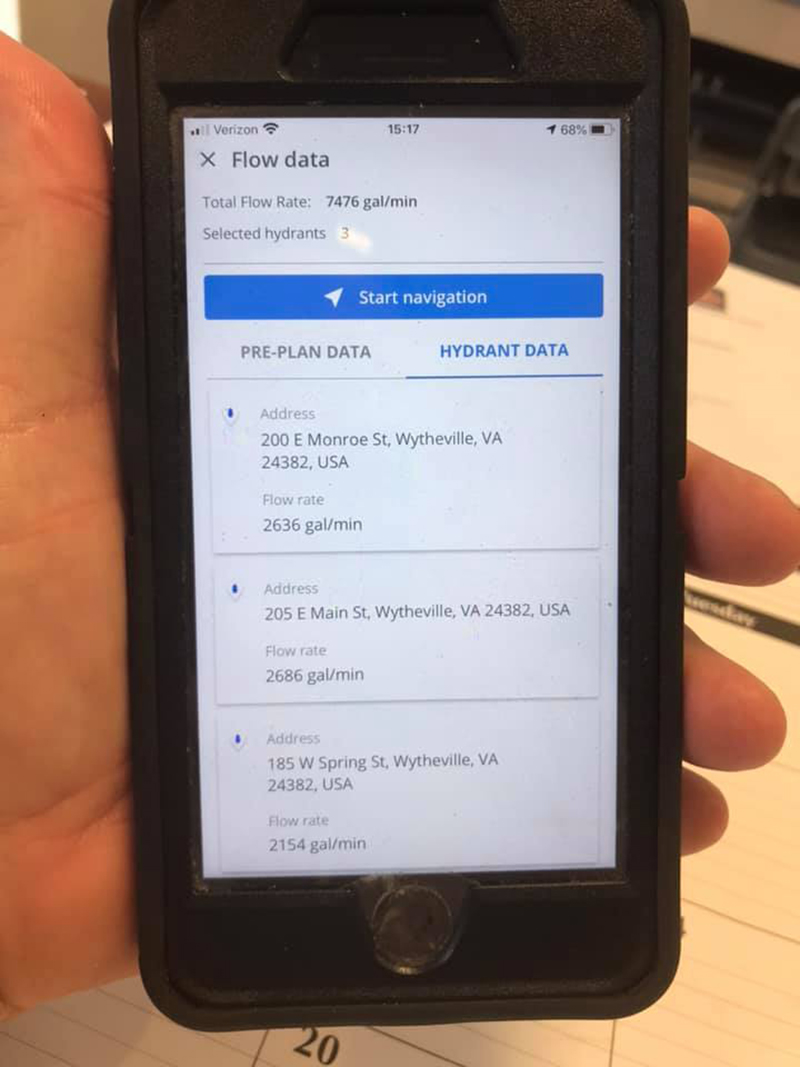
(12, 13) Depending on which app you choose, here is what preplan data would look like when you pull it up. Again, you will notice that at the top it is noted that three hydrants are attached to this preplan and the total flow capacity for all three.
Our department chose to paint our hydrants yellow for easy visibility at night, and we painted any odd-sized caps white. For example, most of our hydrants have standard two- or five-inch caps, but some of them have 4½-inch caps. Painting the odd-sized caps helps our firefighters to recognize the size at a glance.
Tape. We chose to tape our hydrants with reflective tape that matches the NFPA color code for flow rating. This makes flow rate identification easy by day or night. Our department placed the tape just under the bonnet where it bolts to the barrel of each fire hydrant. We had to adjust or modify some hydrants depending on shape, but every hydrant has been identified.
Develop a Plan
Now that you know the basic features of a good hydrant management plan, here is the first step to execute it: Develop your own plan for what you want to accomplish, which steps to take, and when to take them. The steps in this article will help you build the framework for this plan, and you can modify them to suit your department’s needs, but make sure you have a good plan before you start doing the work and that you contact all the stakeholders (commissioners, council, mayor, public works, and so on). Buy-in from your crews is key, as you will hear grumbling about it, but this ultimately has several advantages that can pay huge dividends for the organization, the personnel, and the community.
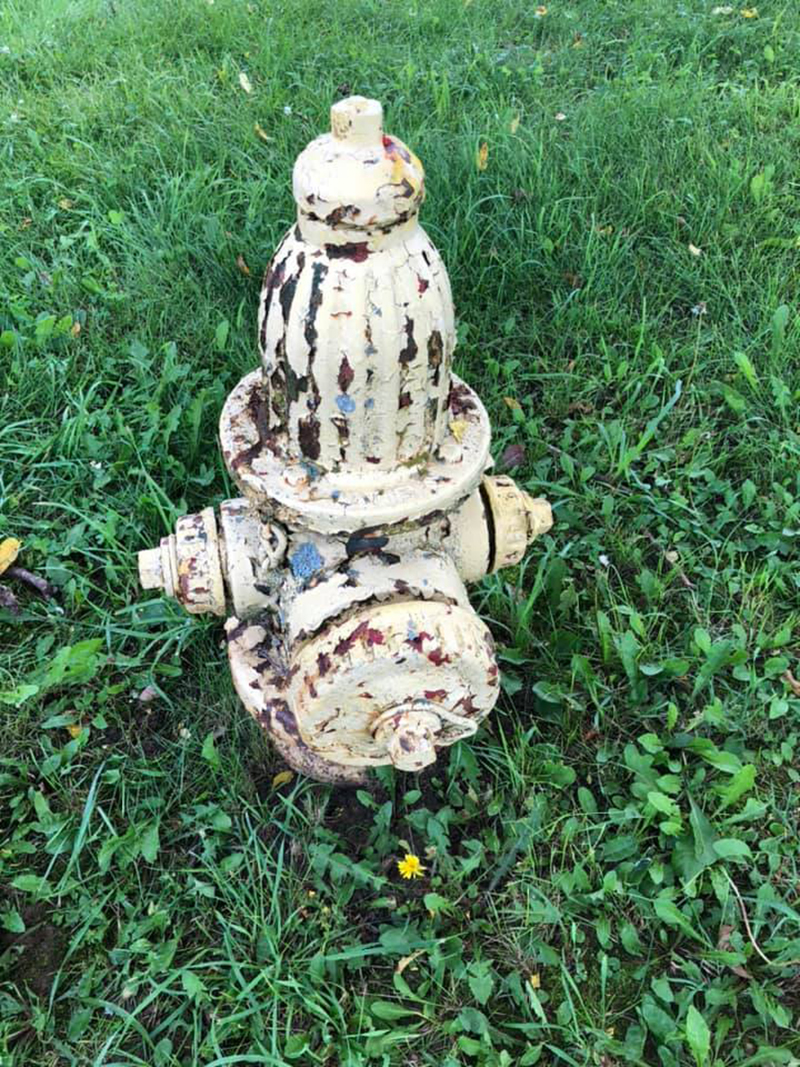
(14) This hydrant had been installed pre-1960 and had multiple layers of paint, rust, and grime.
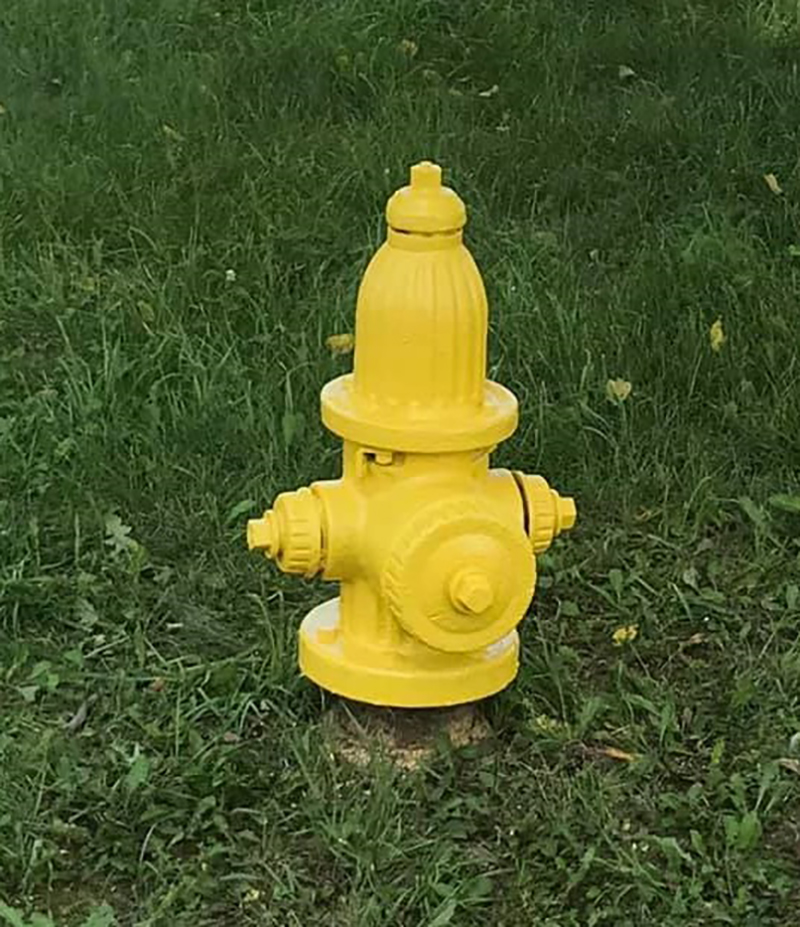
(15) The finished result after crews took pride and ownership to a new level and spent more than an hour with a grinder, a wire wheel, and brushes to clean it. Although some would say that’s excessive, the result is not only a freshly painted hydrant but all the positive comments received from the community. If you take this much pride and put forth this much effort into taking care of your fire hydrants, the community will take notice and support you.
Tell the Community
Implementation of your hydrant management plan may raise a few eyebrows as you send firefighters out to do the work. To prepare for this, run a public relations campaign on social media ahead of time. Tell your community what you plan to do so they will not be surprised when firefighters show up in their neighborhoods.
Our community was overwhelmingly supportive of our projects because we told them what to expect and explained how painting and taping the hydrants would help keep them safe. We also made sure they knew that this work would help lower their insurance rates.
Schedule Tasks
Once you determine which tasks to do and when, break your city into hydrant districts based on GPS locations. Then, assign the districts to your department’s different shifts. Build the tasks into each shift’s workflow according to the timeline you set for task completion. This keeps everyone moving forward on the project.
As your crew begins checking hydrants, they may find some are very old or out of service. Take notes and pictures of these issues and submit them to your water department or water commissioner for repair or replacement. You can help troubleshoot and improve your city’s water supply.
Get Going
Developing a hydrant management program is neither very easy nor very hard, and most departments will find themselves up to the task. Now that you know the steps to take, go start your own hydrant management program. Your department and your community will reap the rewards of a well-managed water supply as you respond to incidents quicker and with better information.
Special thanks to Joy Ortiz of FlowMSP and Michael Anderson of Hydro Flow Products, Inc./Hose Monster Co. for their technical input on this article.
MICHAEL F. FRONIMOS is a 32-year veteran of emergency services and assistant chief (ret.) with Wytheville (VA) Fire Rescue. He has served in many roles and capacities in his career, including firefighter-EMT, apparatus operator, training captain, battalion chief (shift commander), and assistant chief. He has served as a volunteer, part-time, and career firefighter as a well as a public information officer in Michigan, Indiana, Kentucky, North Dakota, and Virginia. He graduated from broadcasting school, has been a student of emergency services since high school, and is a student at Columbia Southern University. He has presented at FDIC International for six years and has traveled across the country and internationally, speaking on crisis communications, leadership, and other fire service topics.

